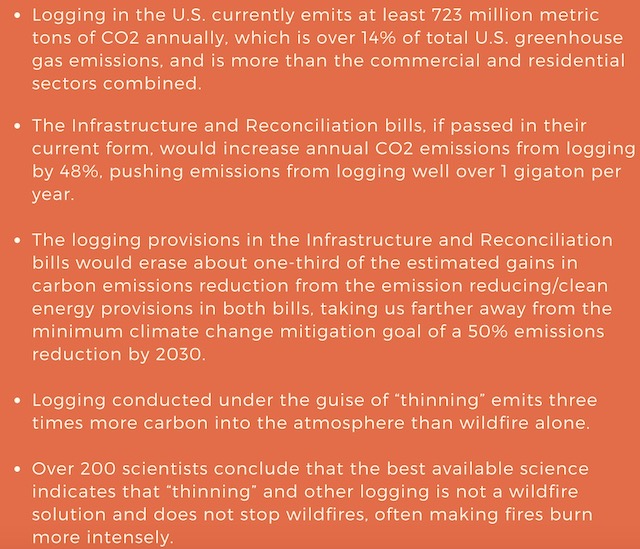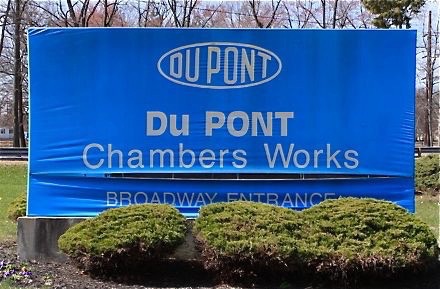NJ Spotlight Parrots DEP Spin, With No Mention Of Context
More Gaslighting By DEP On Environmental Justice And Climate
Duck Island Neglect Continues
Last September, NJ Gov. Murphy boldly claimed that the flawed environmental justice bill he signed into law was “historic”. In fact, that was the title of his self promoting and highly misleading press release.
But note how the Gov. correctly highlights the regulatory role of the DEP:
Fulfilling a commitment to enact sweeping protections for environmental justice communities, Governor Phil Murphy today, alongside U.S. Senator Cory Booker, Mayor Ras Baraka, Senator Troy Singleton, Assemblyman John McKeon, and environmental advocates, signed legislation (S232), which requires the New Jersey Department of Environmental Protection to evaluate the environmental and public health impacts of certain facilities on overburdened communities when reviewing certain permit applications. New Jersey is the first state in the nation to require mandatory permit denials if an environmental justice analysis determines a new facility will have a disproportionately negative impact on overburdened communities
Yet, over 1 year since the Gov. signed the bill into law, the DEP has failed to implement it.
The DEP permit regulations authorized by the bill are nowhere in sight.
So just where are these “historic” and “sweeping protections”?
Yet the EJ advocates, Murphy “vanguard” sycophants, Democratic politicians, and cheerleading press corps have not raised one objection to this DEP delay.
Just the opposite: at every opportunity, they have misled the public about DEP’s actual EJ performance.
The most recent example of this false and manipulative cheerleading is today’s NJ Spotlight’s “fact of the day”:
The Garden State Preservation Trust will consider the following recommended allocations:
-
$42.2 million in grants and loans for 49 park development projects in urban, suburban and rural communities. Nearly 84% of these funds are for local park development projects and land acquisitions in municipalities with overburdened communities;
The Spotlight factoid not only ignores critically important context on the very recent history of open space and parks funding, but it creates the misleading impression that funds are allocated primarily to “overburdened” urban communities.
I) Grossly Misleading Spin On Environmental Justice, Climate, and Resilience
Let’s start with Spotlight’s “overburdened communities” claim.
That Spotlight claim is based on a DEP Green Acres Report: (emphases mine)
This year, special priority was given to projects that meet the Department’s priorities. Applicants were encouraged to formulate projects that anticipate and address climate change impacts, advance long-term resilience goals, provide equitable and meaningful public access, and maximize social, environmental, and health benefits to the public, particularly within Overburdened Communities. Nearly 84% of the funding approved to local governments this round is for projects in municipalities that contain Overburdened Communities.
First of all, this is the first time I can recall DEP blatantly politicizing the Green Acres program in this transparent and cynical way, to not only mislead the public, but to mask their policy and regulatory failures. DEP has done nothing on climate, on EJ, or on resilience.
Just the opposite.
In addition to doing absolutely nothing on the regulatory front to reduce greenhouse gas emissions, in fact, although unreported by the NJ press corps and NJ Spotlight, the DEP even failed to support a petition by climate activists.
The DEP’s spin on the benefits of Green Acres climate and resilience projects is misleading.
I read the project descriptions in the DEP Report – as well as in the Garden State Preservation Trust’s approved projects allocation spreadsheets.
I can assure you that the “climate” and “resilience” objectives are pure rhetoric – the projects are designed for other purposes and those slogans are merely an appendage.
It is a fact free assumption that the geographic allocation to “overburdened communities” actually promotes environmental justice. The same is true for the DEP’s claims on climate and resilience.
Why are fact free assumptions parroted by NJ Spotlight?
Second, the 84% funding to “overburdened communities” claim is even more misleading for three reasons:
1) it simply is not factually accurate – 84% of 42% is 35%.
Do the math: Of the $100 million total, $42.2 million is allocated. Of that, 84% is to “overburdened communities”. So, just 35% of the total funds are allocated to overburdened communities.
There is a very big difference between 84% and 35%. And the law defines “overburdened communities” very, very, broadly.
2) there is no factual or technical basis to support a conclusion that these projects (i.e. the allocation to the statutorily defined “overburdened communities’) are actually designed for, are based on, or would in any way actually promote environmental justice.
Such a claim is not even made or supported by those applicants seeking the funding. Such a claim is largely a figment of DEP Commission LaTourette’s imagination and more of his gaslighting spin.
[Update: a reader sent me this note on the statutory definition of “overburdened”:
The definition of overburdened in the EJ law is on race ,foreign born , speaks foreign language – not pollution- so if your definition includes Alpine and West Windsor they overburdened- while Gibbstown white working class is not. Orwell lives.
As I’ve written, even DEP defines “overburdened” based not only on race, ethnicity and income, but on the actual cumulative burdens and health impacts and risks of pollution and pollution sources. ~~~~ end update]
3) it masks DEP’s failure to implement the “historic” environmental justice law.
The only thing DEP has done to implement that law is to provide a list of “overburdened communities” as defined in that law.
The DEP permit regulations are nowhere to be seen, and with no commitment from DEP to a date certain to propose and adopt those regulations.
Regardless, as I’ve written many times, the law is fatally flawed and can not achieve it’s rhetorical objectives, e.g. see:
II) Lack Of Context And Recent History Of Green Acres Funding Masks Huge Problems
The DEP Report and Spotlight transcription create two main false impressions: 1) a priority to urban EJ policy and projects (which I debunked above); and 2) big funding of parks.
In fact, exactly the opposite is true:
1) total historic Green acres funds have been sharply reduced,
2) previously Constitutionally dedicated capital funding to State parks was terminated,
3) DEP clean water and toxic site cleanup funds were stolen, and funding for private elite conservation groups and highly questionable “stewardship” project was increased.
Spotlight falls to mention this critical context and these facts, particularly State Parks Director Texel’s devastating words:
As the Director of the NJ State Park Service now coping with the reality that our entire Parks capital budget will be completely eliminated beginning July 1, 2015 as a result of the YES vote I can say this is the darkest day I have faced in my professional career. Worse than Superstorm Sandy.
The “Keep It Green Coalition – a groups I call NJ’s “Green Mafia” – was responsible for the: a) Green Acres funding cuts; b) termination of State parks dedicated funding; c) diversion of DEP clean water and toxic site cleanup money; and d) self dealing by feathering their own elite nests, see:
I won’t rehash that entire history here today – those interested can chase the links in the above link or word search the blog.
The only “good news” I can report is that it looks like Trump Partner – whose “stewardship” program is led by a former Exxon hack – NJ Audubon didn’t get any money or for logging Sparta Mountain.
NJA CEO Eric Stiles seems to be “on the cusp” seeking other government troughs to feed at.
III) Speaking of urban parks and environmental justice
I remain frustrated by the neglect and total lack of engagement with the potential for a magnificent urban park on Duck Island:
3. Duck Island Should Be Cleaned Up, Restored, And Developed As An Urban State Park
Duck Island is a gem on the Delaware River in Trenton. It would make a spectacular urban riverfront park, in NJ’s Capital City.
The Island not only has major problems with illegal solid waste disposal and litter.
There are toxic sites on the island that are not completely cleaned up and the public has not been fully compensated for Natural Resource Damages (NRD) caused by major corporate polluters, including oil industry corporations and PSEG.
There also is a mothballed sludge incinerator that was so poorly designed it never operated, and a closed PSEG power plant.
PSEG recently sold their closed power plant property on Duck Island to Hilco Redevelopment Partners, a development company. According to PSEG:
HRP envisions redeveloping the sites as state-of-the-art industrial parks to serve the growing need for regional warehouse distribution hubs in central and northern New Jersey.
The last thing we need is another “warehouse distribution hub”, especially on the shore of the Delaware River on the edge of Trenton.
The state has no vision.
By failing to develop comprehensive remedial and ecological restoration plans for the entire Duck Island the State of NJ missed a golden opportunity to acquire that land from PSEG as the anchor of a new urban State Park.
But it’s not too late.
Hilco Redevelopment has not received DEP approvals for demolition or redevelopment at the site.
The Murphy administration should immediately do the following:
1) put Hilco on notice that the State of NJ plans to make the Island a State park, will not approve redevelopment permits, and desires to negotiate the purchase of the site. If Hilco is not interested, then NJ is willing to condemn the land, with compensation.
2) Put all the polluters on notice, via an NRD lawsuit, that the State seeks to restore damaged natural resources on the island and that they must pay for the damage they did.
3) allocate CBT Open Space funds to DEP Division of Parks to develop remedial, ecological restoration and park plans.
4) Begin acquiring lands on the island with Green Acres Funds.
5) Put together a package for a legislative appropriation and allocate adequate funds in next fiscal year’s budget.
This is all technically doable and financially feasible.
I am shocked that with all the Penn Foundation money dedicated to the Delaware Watershed (more tha $100 million) and all the well endowed NJ conservation groups that receive that money, that there is absolutely no vision for this gorgeous site, which could become a premier state park and provide tremendous benefits to a distressed city.
The fact this lack of vision and outright neglect is occurring under a Democratic administration that claims to be committed to environmental justice is an outrage and totally unacceptable.
Where are the conservation groups? The major Foundations? The Democrats?
The fact that this idea is not even on the radar is another example of corporate PSEG power in NJ.






















